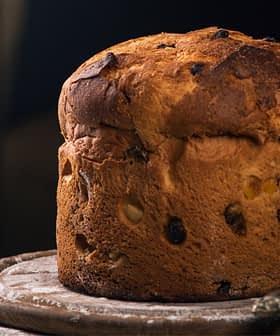 17.7K reads
17.7K readsNews Briefs
Extra Virgin Olive Oil Makes Good Pizza Even Better, Researchers Find

Adding extra virgin olive oil to Neapolitan Pizza can impact its quality, with different EVOOs leaving their own mark on the finished product. The study focused on the Neapolitan Pizza TSG standard, finding that using high-quality EVOO like Ottobratica can significantly improve the taste profile and nutritional value of the pizza.
New research published in the journal Foods has found that adding extra virgin olive oil as a topping to the iconic Neapolitan Pizza might impact its quality.
The study’s authors focused on the Neapolitan Pizza TSG (“Traditional Status Guaranteed”). This E.U.-certified status standardizes the ingredients used and the production process involved in making the pizza.
According to the paper, different extra virgin olive oils (EVOOs) leave their own mark on the pizzas. The research assessed some of the effects on the chemical and sensory characteristics of the finished product.
As described by the Qualigeo association, “Pizza Napoletana TSG is an oven-baked round product with high borders (crust) and a central topping. The dough is made with soft wheat flour, brewer’s yeast, water and salt.”
The Neapolitan Pizza TSG may come in two versions, Margherita or Marinara. Extra virgin olive oil is a crucial topping for both varieties.
See Also:In Naples, Pairing Pizza with Local EVOOsAccording to the scientists, assessing the significance of extra virgin olive oil will reduce the likelihood that some of the pizza’s ingredients will be replaced.
“There is a risk of a general decrease in the quality of food production, including pizza, linked to the choice of adopting different and lower-cost ingredients in a global market in which ‘Made in Italy’ foods are still highly successful and appreciated,” they wrote.
In the study, three different olive oils were tested. One was a lower-grade refined olive oil, the second was a commercial extra virgin olive oil, and the third was a high-quality monovarietal extra virgin olive oil produced by Ottobratica cultivar olives.
The three pizzas were analyzed before and after oven cooking. Free acidity, peroxide number, and spectrophotometric indices were used to assess the olive oil samples.
Extensive analyses were also conducted on all of the pizzas’ toppings. Olive oil was mixed with the other ingredients, such as tomatoes, to assess oxidation, polyphenols presence and other factors.
Both EVOOs scored better than the refined olive oil. The analysis also revealed that the EVOOs’ antioxidants protect the tomatoes during cooking.
On top of that, a panel test of twelve trained judges conducted a blind sensory analysis right after cooking. The three different kinds of pizzas were tasted in random order.
The analysis has shown a higher quality taste profile for the pizza made with Ottobratica EVOO, which scored significantly higher in overall flavor, tomato taste and the balance between olive oil and the other ingredients.
The scientists associated the Ottobratica results with its higher nutritional and antioxidant contents, which impacted the pizza’s nutritional profile and improved its flavors.









